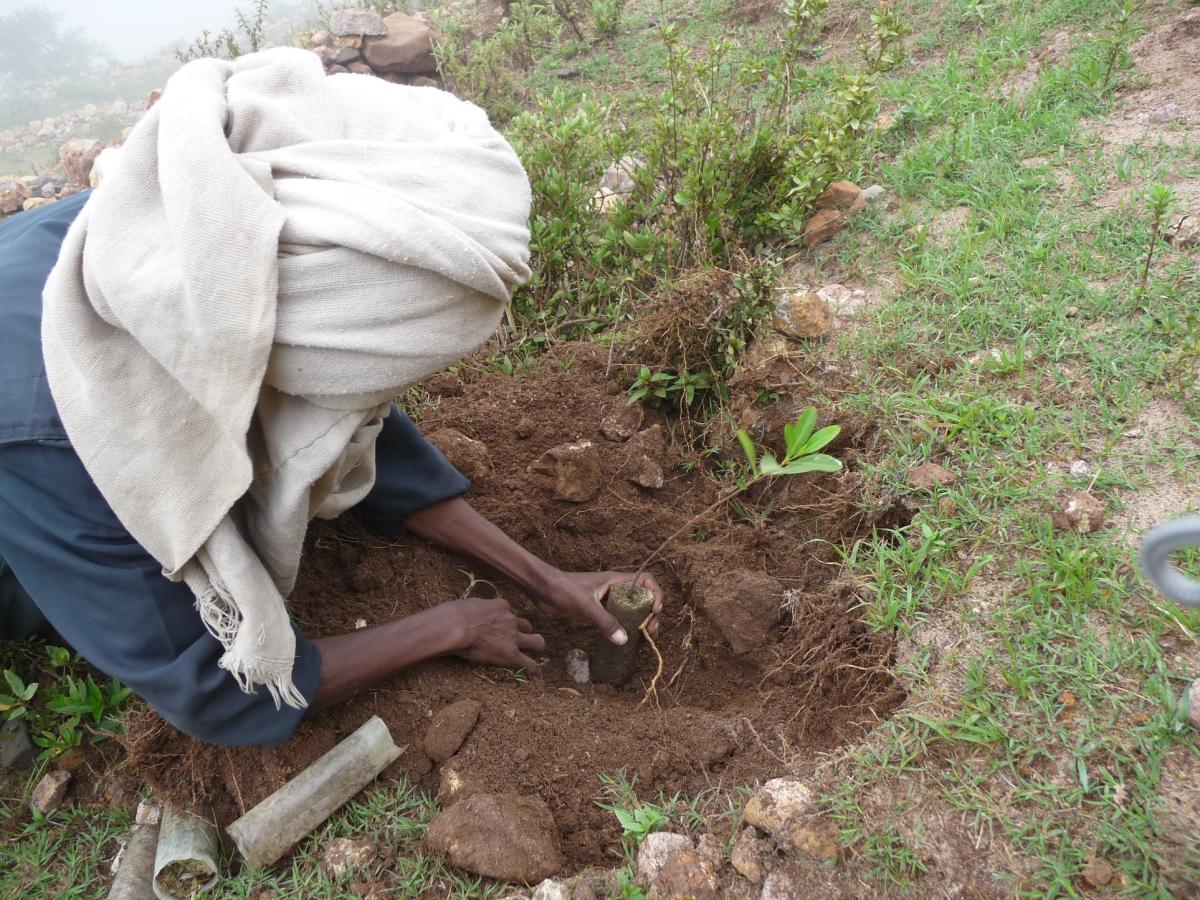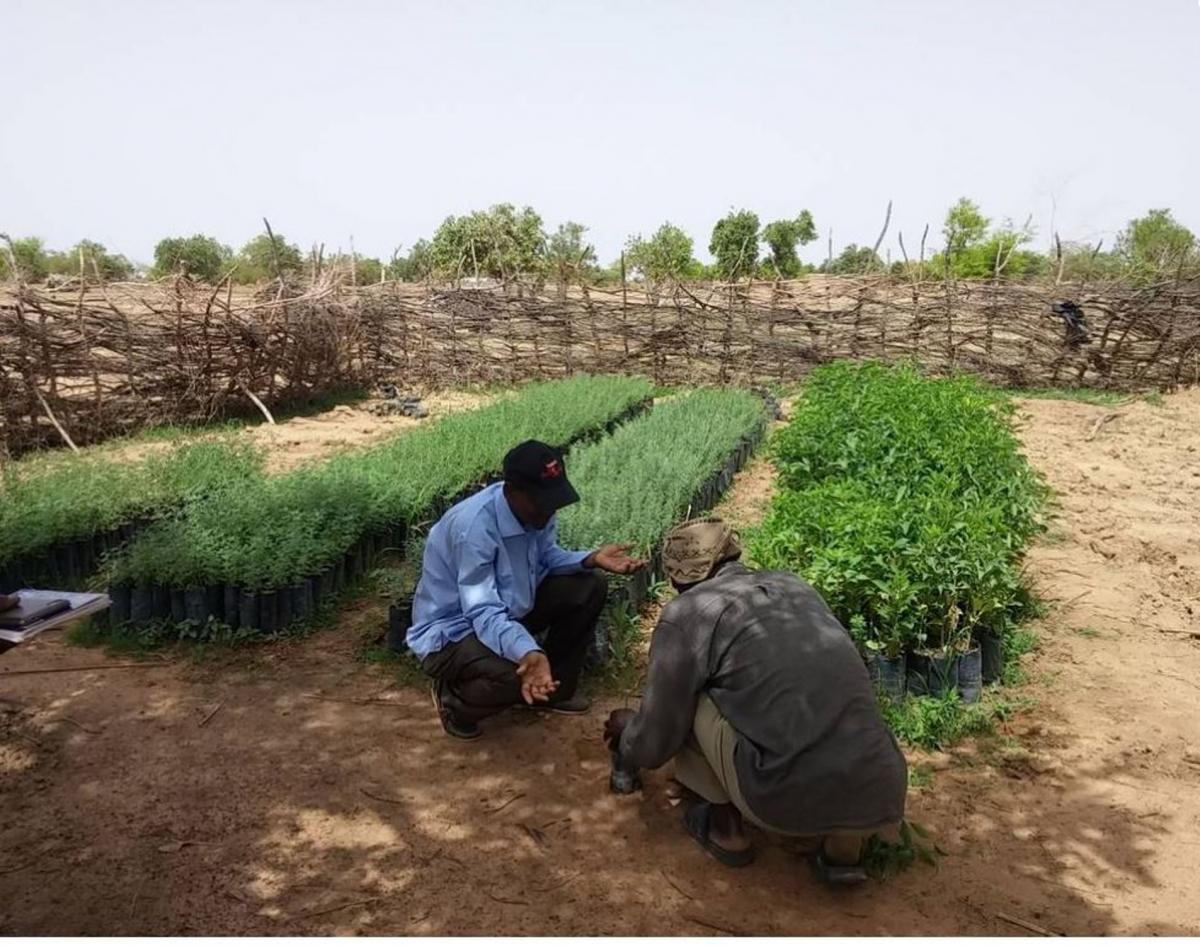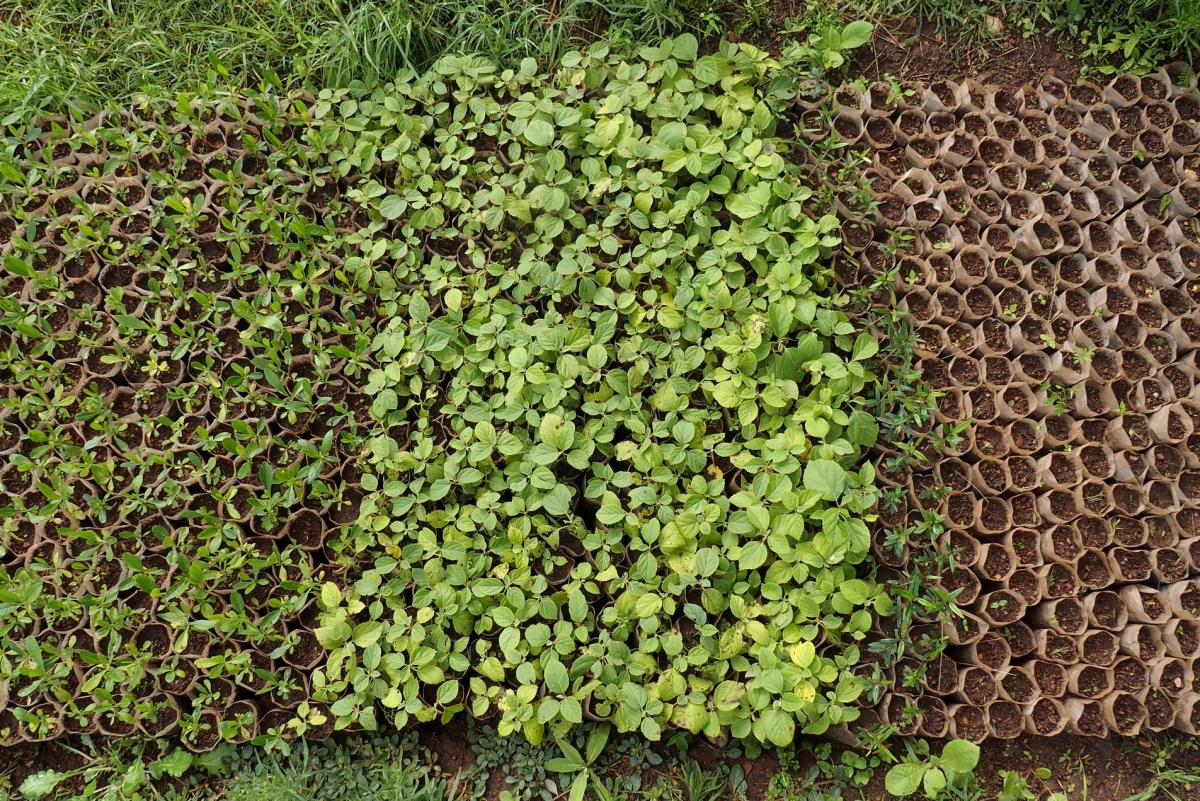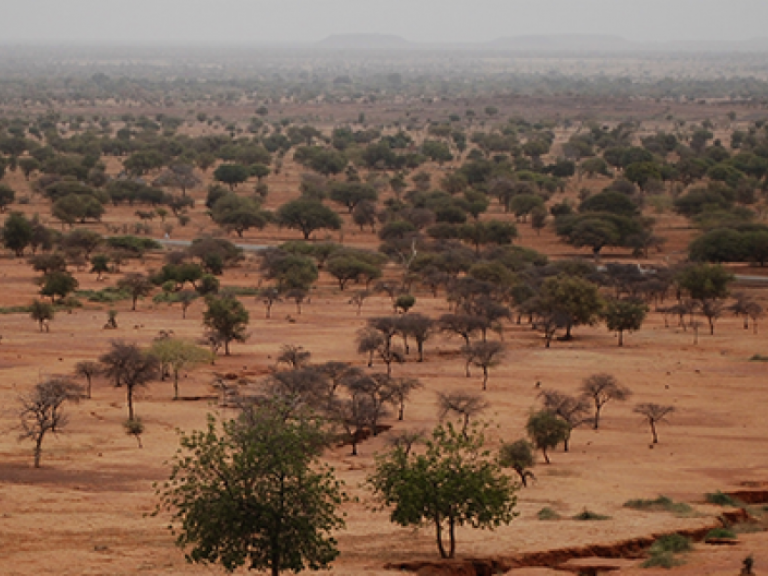-
Last updated on

An Ethiopian man is planting a tree (project BOS+). © BOS+
With the Great Green Wall, the African Union and the international community are aiming to restore 100 million hectares of land by 2030: a continuous strip in the Sahel region connecting the west coast of Africa in Senegal with the east coast in Djibouti. This will require the restoration of 8.2 million hectares of land every year. Eleven countries in the Sahel are involved.
This flagship programme of Agenda 2063 of the African Union aims to combat land degradation, desertification, biodiversity loss and climate change in the Sahel by promoting sustainable land management and land rehabilitation. At the same time, it will create green jobs and extra food. Less people will be forced to migrate out of sheer necessity of life. Various partners have joined the ambitious initiative.
50 million euros
Belgium is also contributing to this 'world wonder in the making'. Recently, Minister of Development Cooperation Kitir allocated 50 million euros during a 5-year period (2022-2026) for a thematic portfolio on climate. The amount will be spent in 4 Belgian partner countries in the Sahel: Burkina Faso, Niger, Mali and Senegal.
Nature-based solutions should enable to make the vulnerable population in the area more resilient and halt desertification. This will also result in better food security, green jobs and decent work. Gender equality will be central. In addition, the programme fully subscribes to Belgium's comprehensive approach for a more stable and secure Sahel. The Belgian development agency Enabel is currently working out the concrete actions.
APEFE
The Belgian non-profit association APEFE(link is external) has been active in Burkina Faso since 2014, with the support of the Belgian Development Cooperation. The association works in close cooperation with the Burkinese Ministry of Environment, Green Economy and Climate Change.
The APEFE programme primarily focuses on capacity development in the municipality of Bourzanga. Based on the experience gained, the programme will be subsequently scaled up. Training is key in this regard. For example, since 2018, 795 women have been trained in composting and agroecology. 130 supervisors and local workers have received training on the sustainable production of non-wood forest products, among other things.

Training to construct stone ridges. © APEFE
485.5 hectares of land were restored using techniques known in the Sahel for centuries. For example, stone ridges on a slope - whether or not in the shape of a crescent moon - can allow running water to infiltrate into the soil. The simple but ingenious zaï method consists of digging small wells that fill up with water when it rains. That is when the pits need to be filled with compost or manure, mixed with sand, together with seed from a tree or crop. This allows the seed to germinate and grow. In addition, 675 manure pits have been constructed.
APEFE also focuses on communication. Indeed, in order to realise the Great Green Wall, it is essential that the local population understands how important it is. The Green Wall simply has to become a strong brand. That is why APEFE has trained 50 journalists and distributed messages via local radio stations. Theatre performances have also been organised.
ADEPS and AWEX
APEFE also carries out reforestation to offset the CO2 emissions of Belgian organisations. For example, the Administration générale du Sport en Fédération Wallonie-Bruxelles (ADEPS) - the French-speaking counterpart to Sport Vlaanderen - has offset its walkers' journeys by car since 2018. Since 2020, the Agence wallonne à l'Exportation (AWEX) compensates its economic missions, also through APEFE.
Together with the Burkinese NGO Tipaalga, 20 tree nurseries were selected, each growing between 5,000 and 20,000 trees. The choice was made for useful local species such as baobab and acacia. Some species will be used to plant live hedges to protect the fields from wild animals. Other species provide traditional medicines or nutritious fruits and leaves.
Thanks to ADEPS, 240,000 trees were planted in 2018 and 2019. In 2020, ADEPS will finance 110,000 trees and AWEX 42,000. Last but not least, 500 producers have received training in sustainable soil management: composting, construction of stone ridges and suchlike. APEFE prefers to train local people who, in turn, train other producers in their own community. That way, the training has much more impact.

Tree nursery in Burkina Faso which will be involved in reforestation. © APEFE
4 million beneficiaries
Finally, APEFE, together with Oxfam Spain, has launched a new project in 2020, with the support of the European Union. The aim is to strengthen young people's and women's leadership in climate management and resilient adaptation to climate change.
In any case, the Burkinese government and the international community are extremely satisfied with the actions of APEFE. Indirectly, these actions will benefit the entire population living in the Burkinese zone of the Great Green Wall, which amounts to more than 4 million people. 85% of them depend directly on natural resources for their survival. By restoring the land, they will once again have the opportunity to produce and earn a living.

Growing saplings in Ethiopia (project BOS+). © BOS+
BOS+
Together with local partners, BOS+ is committed to the rehabilitation and sustainable management of degraded land in the Ethiopian highlands, an area plagued by extreme conditions of poverty and drought.
BOS+ focuses on 9 communities, who together aim to restore more than 400 ha of degraded forest in the form of 'exclosures' that they manage themselves. In these temporarily enclosed areas, they are no longer allowed to collect firewood and their cattle can no longer graze there. That way, planted trees or naturally occurring seedlings can grow into mature trees. In the long term, this forest will lead to less erosion (= loss of fertile soil particles) and better rainwater infiltration. It is also a source of fire and construction wood.
At the start of the project, the beneficiaries were primarily landless farmers, often young people and women. They gain access to a piece of land from the exclosure and learn to generate an income from it. However, their activities are not allowed to harm plant growth. They set up bee hives there and harvest grass for their cow, some goats and sheep. As such, they take advantage of it to protect the forest. They plant saplings themselves and ensure the subsequent care, which is essential in these dry conditions.
Other NGOs
But apart from APEFE and BOS+, various other Belgian NGOs are contributing to the Great Green Wall: SOS Faim, Autre Terre, Iles de Paix, Solidagro, Solidarité Socialiste, Broederlijk Delen, Oxfam Solidariteit, ULB Coopération, Join for Water... They all promote agroecology, agroforestry and integrated water management in Mali, Burkina Faso and/or Niger. These initiatives make it possible to increase soil fertility, and ultimately prevent erosion and desertification.
Finally, the private initiative 'Ondernemers zonder Grenzen' (OZG) (Entrepreneurs without Borders) have successfully constructed 10,000 hectares of new 'agroforest' in Burkina Faso, among other things using the zaï method. They are currently applying the same technique in Senegal. OZG has been officially accredited by the UN Convention to Combat Desertification (UNCCD).
More on Planet

The Great Green Wall: a wall that unites
Under the ‘Great Green Wall’ initiative, 20 million hectares of land have so far been restored. The 11 Sahel countries involved,...

Belgium, on its way towards a circular economy
Belgium ranks among the top 10 largest contributors of the UN Environment Programme (UNEP), the leading global environmental aut...

12 tips for combatting climate change
The EU is demonstrating its climate ambitions with its Green Deal. But the Deal can only succeed if everyone takes part. That's ...
